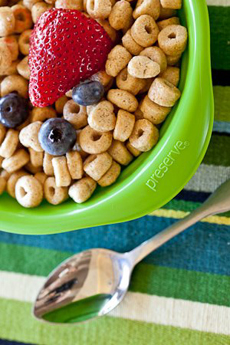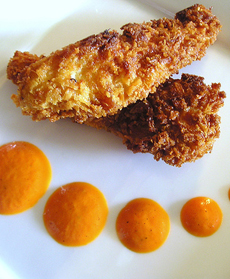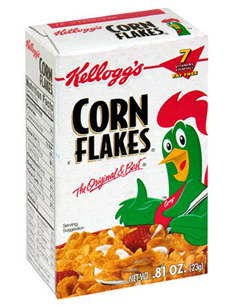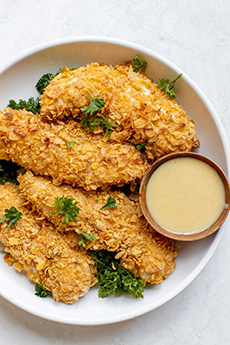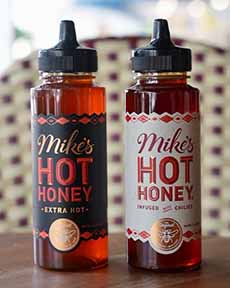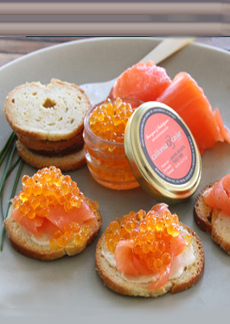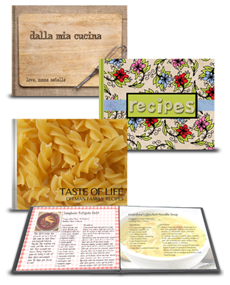|
A few days ago we wrote about the superiority of panko, Japanese breadcrumbs, over American breadcrumbs.
Yesterday, munching on some Corn Flakes for breakfast, we noticed the Corn Flake-crusted chicken recipe on the back of the box (called “Double Coated Chicken”).
Hmm, we thought: How do Corn Flakes stand up to panko?
For lunch, we made both. The verdict: While we love panko, Corn Flakes win hands down—they’re more crunchy and more flavorful.
We hadn’t used Corn Flakes breading in years, associating it with less-interesting old-school American cooking of the 1950s and 1960s.
We were wrong. We’ll now use a Corn Flakes crust on fish and other fried foods; and crunchy Corn Flakes crumbs instead of bread crumbs atop mac and cheese and other recipes.
The orange dots on the plate are a peach purée with bourbon.
The recipe follows, but first:
> Here’s a recipe for oven-fried chicken with Corn Flakes breading.
> The different cuts of chicken. How many can you name?
> The history of chicken.
> The year’s poultry holidays: chicken, turkey and duck.
RECIPE: CORN FLAKES FRIED CHICKEN
Ingredients For 2 Servings
1 skinless boneless chicken breast (8 ounces)
1 large egg
1/4 cup milk
1-1/2 cups corn flakes
1/3 cup vegetable oil
1/4 + 1/4 teaspoon salt
1/4 + 1/4 teaspoon pepper
Optional garnish: Runamok Chile de Arbol Honey or other “hot honey”
Preparation
1. POUND the chicken between 2 sheets of plastic wrap to an even 1/2-inch thickness. Sprinkle chicken with 1/4 teaspoon each of salt and pepper.
2. WHISK the egg and milk together in a shallow bowl. In another bowl, crush the Corn Flakes and toss with the remaining salt and pepper.
3. HEAT the oil in a small nonstick skillet over medium heat until hot.
4. DREDGE the chicken in the egg mixture, letting excess drip off, then in the Corn Flakes. Press so that the Corn Flakes adhere.
5. FRY the chicken, turning once, until golden and just cooked through (5 to 6 minutes). Drain on paper towels. Serve with a drizzle of Mike’s Hot Honey.
ANOTHER WAY TO COAT FRIED CHICKEN
Try cornmeal or blue cornmeal.
And don’t forget panko!
ANOTHER WAY TO ENJOY CORN FLAKES
Try Corn Flakes as a crunchy topping on ice cream. We prefer them to the sweetened Frosted Flakes—they’re a better counterpoint to the sweetness of the ice cream.
> Who invented Corn Flakes.
|
